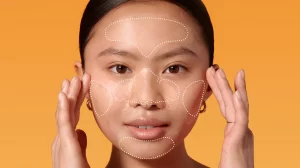Beauty has fascinated humanity for centuries, and the concept of an attractive face has evolved over time. However, the perception of beauty is not solely subjective; it is deeply rooted in the science of human anatomy. Understanding the intricate structures that compose the face can provide valuable insights into why certain features are universally considered attractive. In this blog, we will delve into the science of beauty by exploring the anatomy of the face and how it influences our perception of attractiveness.
The Foundation: Bones and Muscles
The face’s foundation lies in its underlying structure of bones and muscles. The skull forms the framework for the face, while the facial muscles create facial expressions and support the skin. The positioning and prominence of facial bones play a crucial role in facial aesthetics. For instance, well-defined cheekbones are often associated with beauty, as they create a more sculpted and youthful appearance.
The Canvas: Layers of Skin
The skin is the canvas upon which beauty is displayed. The facial skin consists of three main layers: the epidermis, dermis, and subcutaneous tissue. The epidermis acts as a protective barrier, the dermis contains collagen and elastin fibers for skin strength and elasticity, and the subcutaneous tissue provides insulation and fat storage. A healthy and smooth skin texture contributes to a youthful and attractive appearance.
Symmetry and Proportions
Symmetry is an essential aspect of facial beauty. Studies have shown that people generally find symmetrical faces more attractive, as they are perceived as a sign of good health and genetic fitness. Additionally, facial proportions contribute to attractiveness. The golden ratio, often referred to as Phi (Φ), is a mathematical concept that defines facial proportions that are considered aesthetically pleasing. Features like the distance between the eyes, the width of the nose, and the length of the chin all play a role in facial harmony.
Eyes: The Window to Beauty
Eyes are a focal point of the face and a key determinant of attractiveness. Large, expressive eyes with a defined eyelid crease are often associated with beauty. Eye color can also influence attractiveness, with certain colors deemed more captivating than others. Symmetrical eyebrows that frame the eyes enhance facial symmetry and attractiveness.
Nose: Finding Balance
The shape and size of the nose significantly impact facial aesthetics. In general, noses with a straight bridge, a defined tip, and balanced proportions in relation to other facial features are considered attractive. A well-proportioned nose can complement the overall harmony of the face.
Lips and Smile
Full, well-defined lips are often associated with youthful attractiveness. The upper lip should be slightly smaller than the lower lip for a natural look. A genuine and radiant smile can also enhance facial beauty, as it reflects happiness and approachability.
Aging and Beauty
As we age, facial structures undergo changes. The loss of collagen and fat can lead to a reduction in skin elasticity, resulting in sagging and wrinkles. Understanding these natural aging processes can help us appreciate the beauty that comes with experience and maturity.
Conclusion
Beauty is not merely a superficial concept; it is deeply intertwined with the science of human anatomy. Understanding the complexities of facial bones, muscles, and skin sheds light on why certain facial features are universally perceived as attractive. While cultural standards and personal preferences can influence beauty ideals, there are underlying biological factors that contribute to our perception of attractiveness. Embracing the diversity of facial beauty and understanding the intricate science behind it can lead us to appreciate the uniqueness and individuality that make each face special.

